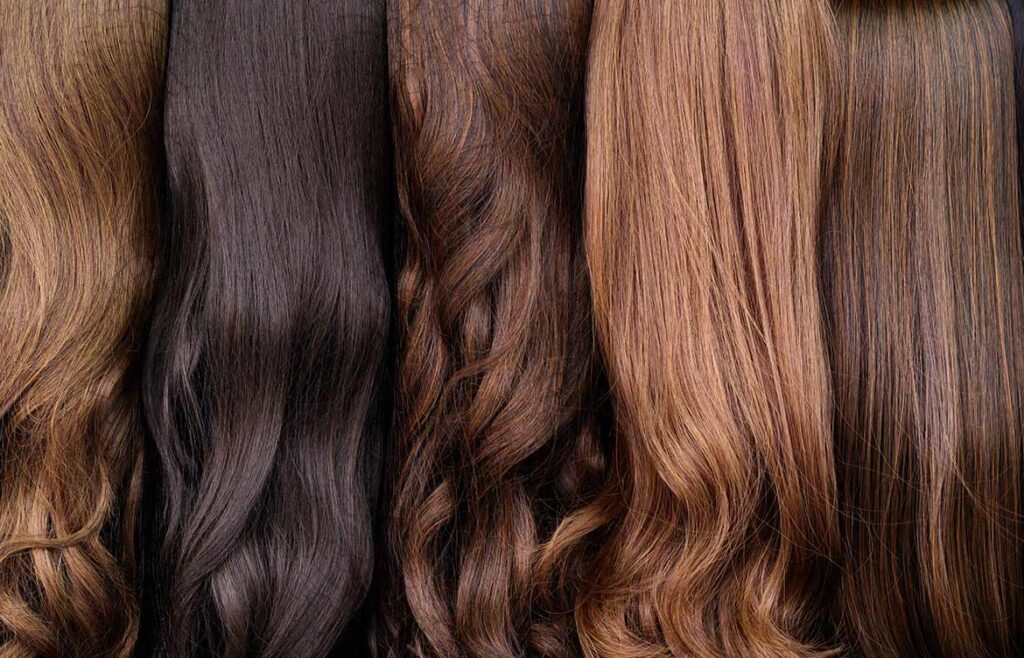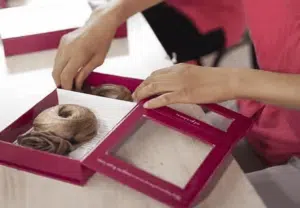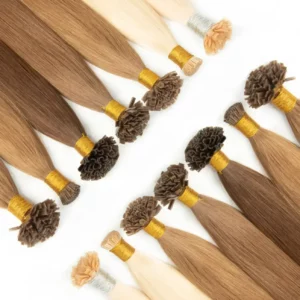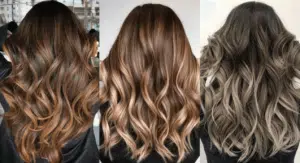TITLE: Where Do Hair Extensions Come From?
Are you intrigued by the world of hair extensions and want to know where they actually come from? Whether it’s human or synthetic hair, the journey of hair extensions is fascinating. Let me walk you through it, like a friend unveiling secrets.
ANSWER SECTION:
Hair extensions come from both human and synthetic sources. Human hair is primarily collected from countries like India and China, while synthetic hair is manufactured from various artificial fibers.
1

1
READ ON:
Stay with me, and I’ll take you through the intriguing journey of hair extensions, covering everything from sourcing and ethics to choosing the right type for you.
1
Understanding Hair Extensions: What Are They and Why Use Them?
1
Hair extensions have taken the beauty world by storm, becoming more than just a tool to enhance natural beauty. The core purpose of hair extensions goes beyond mere aesthetics. They cater to various needs, from providing refuge for those recovering from a bad haircut or dealing with thinning hair due to health issues to serving as a temporary fix for special occasions. Furthermore, they allow for experimentation with different looks without the commitment of a haircut or color. With technological advancements and the increasing popularity of extensions, they have seamlessly integrated into everyday life, becoming a common enhancement in personal grooming.
The market is inundated with an array of luxurious hair extension types, ranging from quick and convenient clip-ins to more permanent options like tapes and weaves. Moreover, extensions can be selected for their beautiful colors and curl patterns, enhancing not only the appearance but also the underlying charisma.
Hair extensions are no longer a mere fashion accessory; they’re a means to magnify personal allure, fortify self-confidence, and allow for a more radiant and expressive self. Whether seeking a subtle enhancement or a complete transformation, the diverse and high-end selection available today ensures that there’s a perfect match for everyone’s beauty goals
1
Sources of Human Hair: Countries and Regions Where Hair is Collected
1
The hair extension industry sources human hair from various countries and regions across the globe, each with unique characteristics. Here’s a closer look at some of the main sources:
Indian Hair
Indian hair is known for its versatility and texture that suits many hair types. Often collected from temples, it’s typically virgin hair, meaning it hasn’t been chemically treated. Indian hair is lustrous and thick, offering a natural wave pattern.
Vietnamese Hair
Vietnamese hair is appreciated for its strength and thickness. Its straight and sleek appearance is a distinctive feature, making it ideal for specific styles. However, it might not blend well with all hair types due to its coarse texture.
Russian Hair
Russian hair is a premium choice known for its fine texture and natural-looking colors. It’s often collected from rural areas in Russia, where chemical treatments are less common, maintaining its natural integrity.
Brazilian Hair
Brazilian hair is famous for its density, softness, and natural wave. It blends well with many hair types and is known for its durability. Brazilian hair often comes in various shades of brown and can be easily styled and colored.
Mongolian Hair
Mongolian hair is known for its softness and slightly wavy texture. It’s thinner compared to Brazilian hair but still offers great volume. Its natural color range tends to be dark, and it’s often prized for its ability to hold curls.
Chinese Hair
Chinese hair is usually silky and straight, with a thickness similar to Vietnamese hair but a softer feel. It’s often considered durable and holds styles well. The natural color of Chinese hair is typically dark, but it can be easily colored and manipulated.
European Hair
European hair, especially from countries like Spain and Italy, is often considered some of the finest quality hair. It’s typically finer and comes in a variety of natural shades. Its versatility makes it suitable for many Western clients as it blends well with various hair types.
While these regions are the primary sources of human hair for extensions, it’s important to recognize that there are other sources as well. Different suppliers may have different quality control measures and ethical practices in place, so it’s always wise to inquire and research before purchasing.
These diverse sources of human hair cater to various preferences, styles, and budgets, allowing consumers to find the perfect match for their needs. Recognizing the characteristics of hair from these different regions helps in making an informed decision that aligns with one’s desired look and values.
1

1
The Process of Collecting Human Hair: Ethical Considerations and Ways
1
Collecting human hair for extensions is a multifaceted process that brings together various motivations, ways, and ethical considerations. Here’s an overview:
Commercial Hair Sale & Collection Centers: In certain regions, the sale of hair provides an essential source of income. Individuals actively sell their hair, making it one of the primary sources of human hair in the market. Fair compensation and transparency in this commercial exchange are vital. Where hair sale is prominent, commercial centers may facilitate collection, meeting industry standards, and providing fair compensation to donors. This has almost become a complete industrial chain ,for this industry, Commercial Hair Sale & Collection Centers account for almost 80%-90% of the hair source in the entire market.
Voluntary Donations for Religious Purposes: In countries like India, people often donate hair as a sign of religious devotion or spiritual practices.
Charitable Contributions: Individuals donate hair to organizations creating wigs for medical patients, adding an altruistic layer to hair collection.
Salon Partnerships: Hair factories might collaborate with local salons, allowing clients to donate hair that meets specific quality standards.
Family or Community Traditions: Some cultures weave hair donation into family traditions, rites of passage, or community legacies.
Collecting human hair for extensions represents a confluence of individual motivations, commercial interests, ethical responsibilities, and market influences. In today’s society, the sourcing of hair is fundamentally voluntary and generally aligns with social and ethical norms. The industry has evolved to embrace responsible practices and informed choices, underscoring that the acquisition of human hair for extensions is carried out with both consent and respect for individual dignity.
1
The Process of Collecting Human Hair: Ethical Considerations and Ways
1
Synthetic hair extensions might seem like a product of the future, but they’ve been around for quite a while. Crafted from artificial fibers, such as polyester, these extensions mimic the look and feel of human hair – often at a fraction of the cost.
Yet, the term ‘synthetic’ is broad. The quality of synthetic hair can vary immensely. While some might appear plasticky and artificial, higher-end variants can be almost indistinguishable from real hair.
The manufacturing process is intricate. Fibers are carefully crafted to reflect the diverse textures and colors found in human hair. But consumers should note – despite their advancements, synthetic extensions typically don’t have the longevity or versatility of their human counterparts.
1

1
The Journey of Hair Extensions: From Source to Salon
The journey of hair extensions is an intricate and fascinating process that starts at the very root of human hair or the creation of synthetic fibers. This passage delves into the step-by-step processes that bring extensions from raw material to finished product, whether it’s real human hair or manufactured synthetic strands.
Human Hair:
- Collection: Human hair is collected from various global sources, including temples, salons, and individuals who willingly sell their hair. Specific regions like India, China, and Russia are known for providing large quantities of hair.
- Cleaning and Sorting: Once collected, the hair must be thoroughly cleaned to remove any impurities. It’s then sorted according to length, color, and quality. This is a meticulous process often done by hand.
- Treatment: Depending on the desired final product, the hair might undergo chemical treatments to achieve uniform color and texture. This ensures that extensions blend well with a variety of natural hair types.
- Wefting/Process: The hair is then sewn into wefts or other extension types like tapes and clips. This involves a combination of machine and hand sewing to ensure a durable and natural-looking product.
- Quality Control: Rigorous quality checks are performed to make sure the extensions meet specific standards. This includes inspection for any remaining impurities, inconsistent coloring, or structural flaws.
- Packaging and Distribution: Finally, the finished extensions are packaged and distributed to salons and retailers, ready to be selected by the consumer.
1
1
Synthetic Hair:
- Material Selection: Synthetic hair is manufactured from artificial fibers like polyester. The material is chosen for its ability to mimic the appearance and feel of natural human hair.
- Melting and Molding: The selected material is melted down and molded into strands that reflect various hair textures and colors. This process requires precision and technological know-how.
- Crafting Extensions: Similar to human hair, the synthetic strands are then crafted into the desired extension types, such as wefts, clips, or tapes.
- Quality Assurance: As with human hair, synthetic extensions must undergo quality checks. This ensures they meet specific standards in appearance, texture, and longevity.
- Packaging and Distribution: Once approved, synthetic hair extensions are packaged and sent to retailers, providing a more affordable alternative to human hair extensions.
The entire process, whether for human or synthetic hair, requires meticulous attention to detail, quality control, and ethical considerations. It’s a journey that involves many hands, technologies, and decisions that ultimately lead to a product capable of transforming appearance and confidence. This global industry’s complexity adds another layer of fascination to the world of beauty, showcasing a blend of traditional craftsmanship, modern technology, and international commerce.
1
Types of Hair Extensions: Clip-ins, Tapes, Weaves, keratins and More
1
The world of hair extensions is vast and varied, now with the advancement of hair extension production and the renewal of people’s design concepts, more and more types of hair extensions appear and popular.
Clip-in extensions are generally user-friendly, designed for easy at-home application. With some practice and care, many people find they can achieve salon-like results. As the name suggests, they can be easily clipped on and off, offering an immediate transformation. There are also recently popular halo hair extensions, ponytails, and bangs, which can be installed and removed by customers themselves. They are highly flexible and can change customers’ hairstyles at any time, belonging to DIY style.
Tapes, keratins, and weaves, on the other hand, cater to those seeking something more long-term, and they need professional installation. These types of hair extensions require professional hair extension tools, applied by professionals, as well as regular care and maintenance. They blend seamlessly with natural hair and can last for months, then need to visit salons to move up.
It’s worth noting that each category encompasses various product forms, and the industry continues to innovate with more new types of hair extensions regularly. The decision boils down to individual preferences, needs, and budgets. Whatever the choice, ensuring quality and proper care is paramount for the best experience.
1
The Impact of Hair Extensions on Natural Hair: Safety and Health Considerations
1
While hair extensions offer beauty and versatility, they can also have an impact on natural hair if not chosen and managed carefully.
Improperly installed extensions can cause tension on the scalp, leading to potential hair loss. Overuse of chemical products and excessive heat on extensions close to the scalp can also affect natural hair health.
Choosing quality extensions, proper installation (preferably by a trained professional for permanent types), and following an appropriate care routine can minimize these risks. It’s also essential to give natural hair regular breaks from extensions to maintain its health.
SUBHEAD 8: Caring for Hair Extensions: Maintenance and Longevity
Caring for Hair Extensions: Maintenance and Longevity
1
Proper care of hair extensions ensures that they stay beautiful and functional for as long as possible. Whether it’s human hair or synthetic, extensions need a regimen different from natural hair.
For human hair extensions, using gentle shampoos and conditioners and avoiding excessive heat can prolong their life. Regular brushing with an extension-friendly brush helps in preventing tangles.
Synthetic extensions, on the other hand, require even more specialized care. Specific products designed for synthetic hair must be used, and heat styling should typically be avoided.
Regular maintenance appointments with professionals, proper storage when not in use, and following product-specific instructions can make extensions last for many months, offering value and beauty in the long run.
1

1
Cost and Affordability: Understanding Pricing in the Hair Extension Market
1
Hair extensions are versatile and offer remarkable diversity, ranging from a complete transformation of appearance to a subtle enhancement. However, navigating the market can be complex due to a multitude of factors affecting pricing. Here’s a breakdown of key elements to provide a comprehensive understanding of what drives costs in the hair extension industry:
Source and Availability: Human hair is a limited and valuable resource due to its slow growth and specific care requirements, thereby affecting its overall cost.
Region & Source: Prices vary by origin, with European and Russian hair generally being more expensive, and Southeast Asian sources relatively lower in cost.
Hair Material: The donor’s age, previous treatments like dyeing or perming, and the quality, thickness and texture of the hair play pivotal roles in pricing. These factors fundamentally determine the extension’s lifespan, ranging from a few months to one or two years, and are the most critical in affecting product pricing.
Processing and Manufacturing: The methods, tools, materials, and labor time used to prepare and style the extensions significantly influence the final price. The complexity and craftsmanship required for each type of extension add to the uniqueness and cost.
For Synthetic Hair:
Varies significantly in quality and price, with the technology used in manufacturing and the raw materials’ quality determining its price and appearance.
Method & Maintenance:
For Professional Methods: Techniques requiring professional handling, such as tapes, weaves, and keratin bonding, offer long-lasting results but are typically more expensive. The overall investment may also include costs related to maintenance, such as specialized products and regular salon visits.
For DIY Options: Clip-ins and temporary options provide flexibility and affordability but may require more frequent maintenance or replacement. Customized extensions can command a premium based on unique preferences in terms of length, color, or texture.
Wholesale vs. Retail Pricing:
Wholesale Pricing: Buying in bulk or wholesale usually leads to significant cost savings. This option is often favored by salon owners, professional stylists, or retailers looking to stock up on various types and styles of extensions. However, it often requires a substantial initial investment and might include minimum purchase requirements.
Retail Pricing: For individual consumers or those seeking specific types and smaller quantities, retail purchasing is the typical route. Though it may be more expensive per unit compared to wholesale pricing, retail offers the flexibility to buy exactly what’s needed without a large upfront commitment.
1
Sustainability Considerations in the Hair Extension Industry
1
The hair extension industry is actively addressing sustainability challenges, recognizing the ecological impact at each stage of the process, from collection to manufacturing and distribution.
Processing Human Hair: The chemicals used to treat human hair can be harmful to the environment. Increasingly, the industry is looking to replace these with more sustainable alternatives.
Synthetic Fibers Production: The production of synthetic fibers also has environmental consequences. Efforts are being made to develop eco-friendly synthetic options that reduce this impact.
Responsible Sourcing:Ethical sourcing practices extend to sustainability, ensuring that the process of collecting and purchasing hair is mindful of environmental concerns. This includes considering the ecological footprint of transportation and packaging.
Eco-Friendly Options:Many brands are offering products that are produced using sustainable methods. This includes using organic and eco-friendly products during the manufacturing process and providing recyclable packaging.The entire supply chain, from source to salon, can be rethought to reduce waste and energy consumption.
Consumer Influence:Consumer demand for sustainable products is driving change within the industry. By choosing brands that prioritize sustainability, buyers are supporting responsible practices.Education and transparency about the environmental impact of products can empower consumers to make informed, sustainable choices.
Collaboration and Innovation:Industry collaboration and investment in research and development are essential for discovering and implementing new sustainable technologies and practices.Partnerships between brands, suppliers, and regulatory bodies can foster a shared commitment to sustainability goals.
Sustainability considerations in the hair extension industry encompass both the ethical treatment of donors and the environmental implications of production and distribution. By focusing on reducing ecological impact, embracing responsible sourcing practices, and encouraging consumer involvement, the industry is making strides towards a more sustainable future.
SUBHEAD 11: The Future of Hair Extensions: Trends, Innovations, and Predictions
The Future of Hair Extensions: Trends, Innovations, and Predictions
1
The hair extension industry is continuously evolving, and the future looks promising. With technological advancements, innovations in synthetic hair are expected to make them even more indistinguishable from human hair.
Sustainability and ethics are likely to play a more significant role, with consumers demanding transparency and responsible practices.
Customization and personalization are trending, with brands offering extensions tailored to individual preferences in color, texture, and style.
The integration of technology, like virtual try-ons and AI-driven recommendations, is also on the horizon, further bridging the gap between consumers and the perfect hair extension solution.
The future of hair extensions seems to be not just about enhancing beauty but also aligning with values, technology, and individuality.
Conclusion
Conclusion
1
The world of hair extensions is a complex and fascinating one, spanning human and synthetic sources, ethical considerations, various types, and emerging trends. From the intricate processes of collecting human hair from countries like India, China, Brazil, Mongolia, and Europe to understanding the characteristics of different hair types, there’s a wealth of knowledge behind what might seem a simple beauty accessory. Ethical and sustainability practices are gaining prominence, guiding consumers towards responsible choices. With continuous innovations and a focus on aligning with individual values and needs, the future of hair extensions promises to be not just about enhancing beauty but an expression of identity and ethics. Whether you’re new to hair extensions or looking to deepen your understanding, the journey of hair extensions offers a rich tapestry of insights and opportunities.





